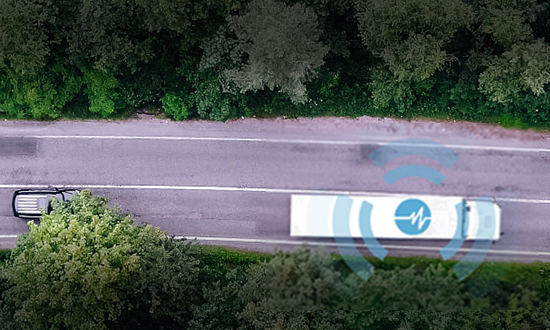It’s been said that change is the only constant in this world. And that’s certainly true when it comes to network technology. 2G, 3G, 4G, 5G. CDMA, GSM, LTE. What does it all mean for you and your fleet?
“G” stands for the generation of the mobile network, or more technically, the specific set of standards established for the network. We’ve moved from 1G to the current global standard of 4G over the past four decades. Generally, a new generation has been introduced every decade, but it takes another 5-10 years before the new network generation is widely used, due to lead time device and equipment manufacturers need to develop and introduce products compatible with the new specs.
Without a doubt, the current buzz in popular media is focused on 5G and faster speeds, but in transportation especially, the attention recently has been on 3G networks. That’s because in order to deliver on the promise of 5G – and beyond – wireless carriers have to repurpose some of their capacity. As a result, 2G and 3G networks are being decommissioned to dedicate that bandwidth and capacity to the development of 5G networks and continued enhancements of 4G networks.
The 3G Sunset Effect
The timing for sunsetting of 3G networks varies by carrier, but all carriers are expected to sunset their 3G networks by the end of this year.
As carriers decommission, or sunset, their 3G networks, equipment developed on and using that network will no longer work, and the manufacturer will no longer support it. You may already have begun to experience some degradation of service from your 3G devices, either in coverage, capacity or reliability, as carriers keep their 3G networks in low bandwidth mode this year in anticipation of the forthcoming sunset.
If you aren’t already doing so, it’s important to work with your carrier to identify all of the trailer telematics devices in your fleet that rely on 3G technology and will be affected by the sunsetting of 3G networks. Additionally, it’s important to determine the impact to your fleet if those devices no longer function so you can prioritize those critical to compliance in your technology transition plan. Lastly, you’ll want to consider not only the devices themselves, but the data they provide. How do you use the data currently? What platform(s) do you use to access it? Would more, better or different data be more useful to your fleet operations?
Making the Transition: Developing Your 3G Sunset Plan
Once you’ve identified the devices in your fleet that will be affected by 3G sunsetting, you’re in a better position to develop a transition plan. The necessary replacement of so many devices within your fleet merits careful consideration not only to ensure compliance requirements are maintained, but also to ensure your new technology investments establish a solid platform for future technological evolution.
Naturally, this transition presents an opportunity for you to assess the overall state of your technology infrastructure and telematics architecture alike and make investment decisions to improve both. New trailer telematics products and platforms have been introduced in recent years that offer enhanced benefits over existing 3G devices.
FleetPulsePRO and FleetPulseGO are two such products. FleetPulsePRO is Great Dane’s innovative integrated sensing trailer and powerful trailer telematics platform that was introduced in 2019. As the first OEM-developed smart trailer, FleetPulsePRO provides real-world, real-time insight into your trailer operations and individual trailer health while establishing a solid foundation for the IoT future of trucking transportation.
FleetPulseGO is Great Dane’s new GPS-only device that can be installed on any trailer and measures location-type data such as current location, location history, movement, heading and speed. It uses state-of-the-art solar harvesting technology to offer greater accuracy, reliability and durability than 3G GPS devices.
Both FleetPulsePRO and FleetPulseGO transmit data reliably via 4G LTE to the same FleetPulse platform for complete fleet visibility in the mobile app or dashboard. Additionally, open API development allows for seamless integration of FleetPulse data into a fleet’s existing telematics infrastructure.
Two of the biggest challenges facing fleets today with regard to trailer telematics are (a) the multitude of data streams from myriad devices, and (b) the timing of more advanced telematics investments given the longer lifecycles of today’s heavy equipment. FleetPulseGO cost-effectively addresses these challenges by providing complete fleet visibility on a single platform and automated inventory reports for improved efficiency, even as investments in integrated smart trailers are phased in.
Planning Ahead: 4G vs 5G
4G LTE, or Long Term Evolution, is the current globally accepted wireless standard that is expected to operate through at least 2030. 4G LTE is the most widely available nationwide network and improves performance over 3G with faster speeds, more capacity for data, greater capabilities for multimedia tasks, higher quality, and improved security.
Most personal consumer devices already use 4G networks, but many fleets have a significant portion of their devices and equipment that still rely on 3G. Though 5G gets a lot of attention, focus now should be on a 3G-to-4G LTE solution.
The negligible latency expected from 5G certainly promises an exciting future of connected and autonomous vehicles, however, full buildout of 5G network capability and broad commercial availability will take several more years. Indeed, 5G investments should be part of your long-term fleet technology strategy, but most 5G investments will prove to be cost prohibitive at this point.
Fortunately, 5G technology builds upon 4G LTE, so you can expect more of an evolution to the next network generation than the current disruptive 3G sunset experience.
Learn more about Great Dane’s LTE telematics solutions, FleetPulse and FleetPulseGO.



